|
|
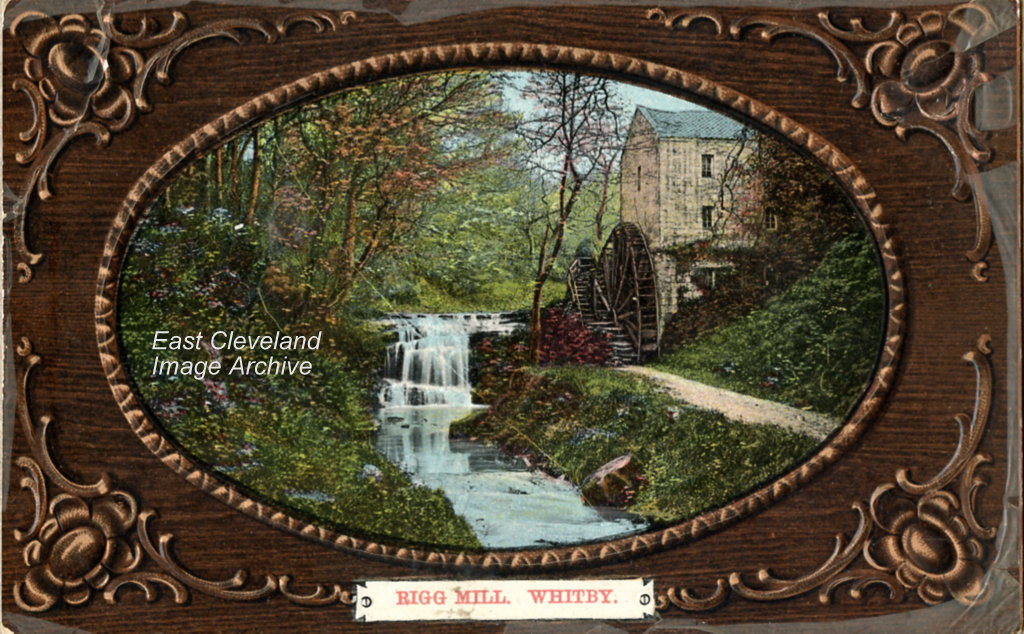
On the site of a Water Mill since the 11th century, The earliest mention in medieval times is an account of a dispute between the Abbot of Whitby owner of the land, and Sir Alexander de Percy tenant in 1316. The mill situated in Larpool woods was rebuilt several times. In 1829 the Miller was William Hill. Can any one tell us when the Mill was last in use.
Image courtesy of Iris Place.
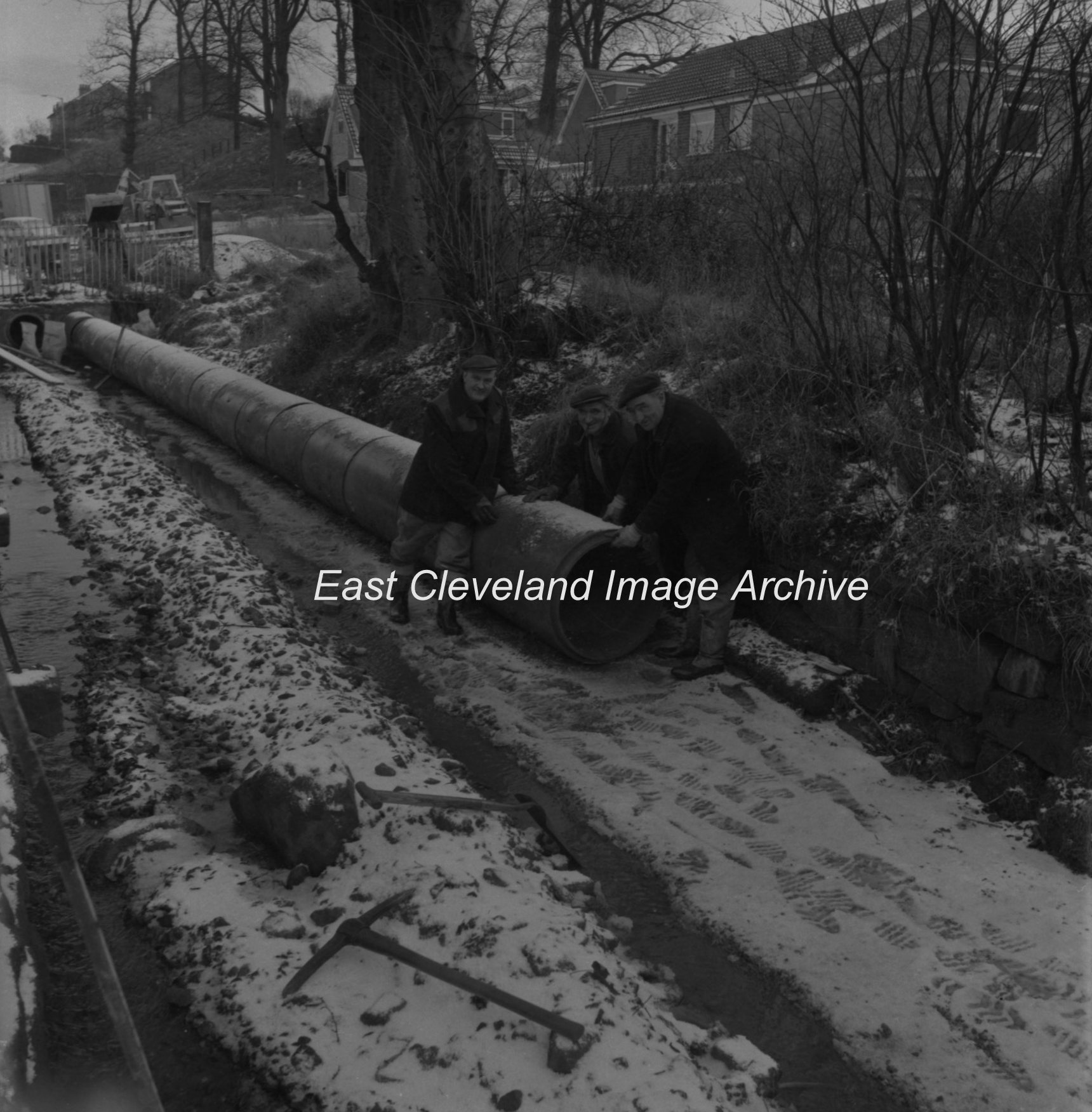
Arlington Street, Loftus. After the building of the Arlington estate in the 1960s It was decided to Culvert the beck and widen the road. Can anyone tell us the approximate date of this image.
Image courtesy of Mrs Sakelaropoulos.
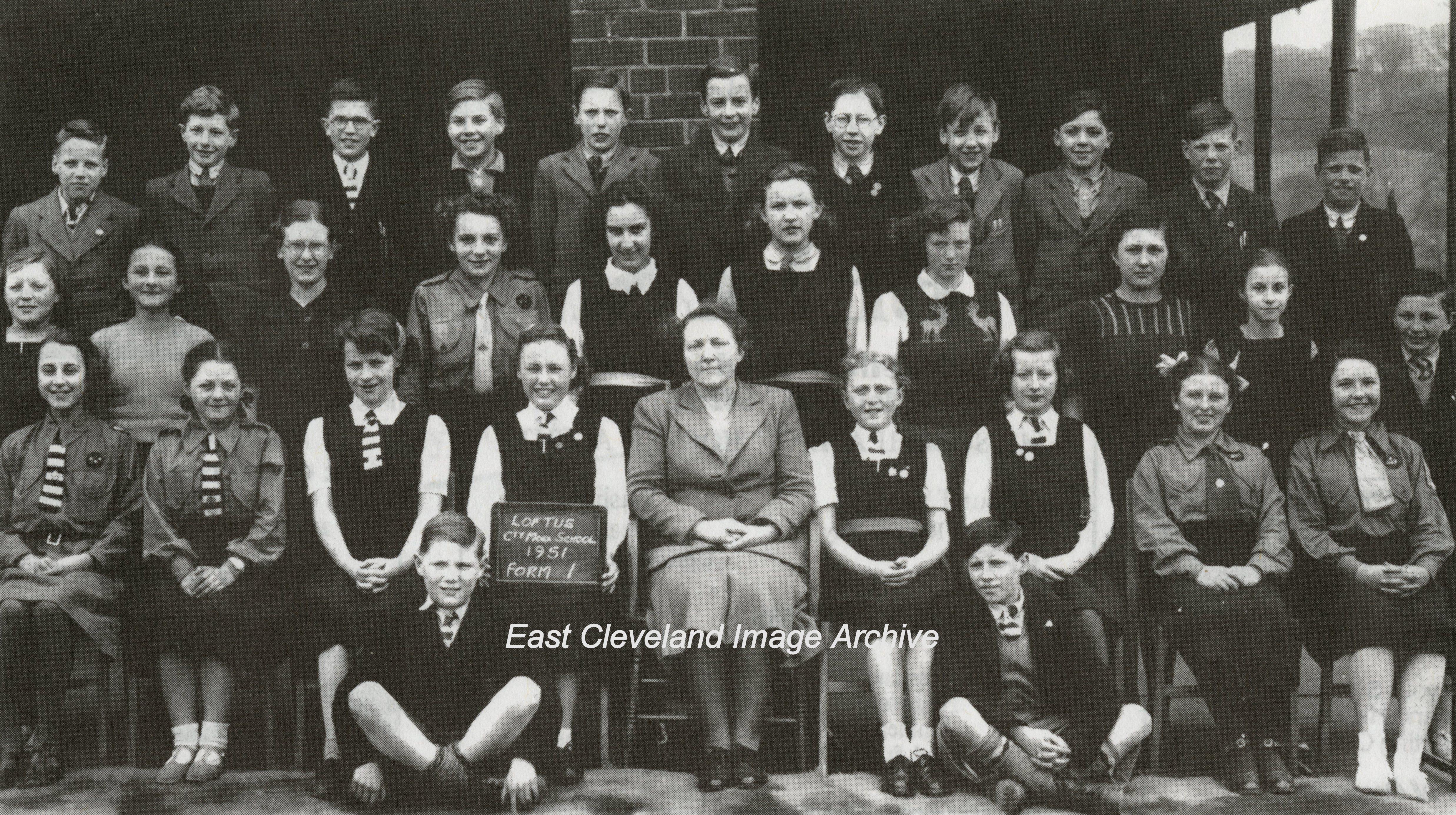
Back row: Fred Ward, Brian Shaw, William Sunley, Ralph Breckon, Colin Riley, Michael Laverick, Tom Fletcher, Billy Day, Colin Wilson, Brian Hodgson, Keith Smith.
Middle row: June Cuthbert, Judy Dobson, Anne Verrill, Alice Partlett, Olwyn Bard, Norma Cockerill, Jean Pearson, Margaret Johnson, Jube Watson, Keith Whitlock.
Front row: Elizabeth Spearpoint, Cybil Temple, Kay Libby, Hilary Robinson, Mrs Norminton, Hazell Boddy, Ann Sawnby, Ann Robinson, Veronica Harrison.
Front (seated): Barry Breckon and Raymond Powell.
Image courtesy of Hazel Collinson and Iris Place.
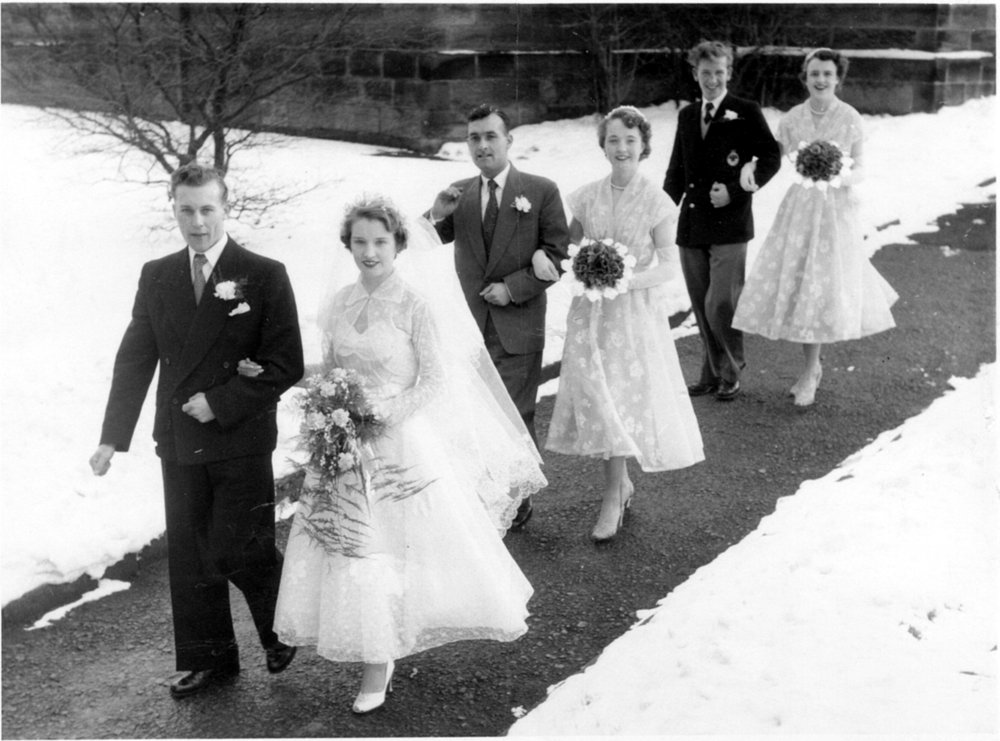
A very cold snowy day in February 1956 when Eileen Money married Bill Hyde, also in the photo, Biddy Webster, best man, Betty Yeoman, brides cousin, Fred Robins, groomsman and Joan Money brides sister.
Image courtesy of Eileen Hyde.
Butlin’s at Filey in the 1970’s I think; did you go, do you remember all the competitions there used to be? The Miss She was a fiercely fought one and on the left of the photograph is Eileen Hyde; sadly coming second. I can describe her outfit because I crocheted it, dress coat and hat, peach was the main colour with stripes of white at regular intervals. I as very proud of making that outfit, sadly I no longer have it and it wouldn’t fit if I had.
Image courtesy of Eileen Hyde.
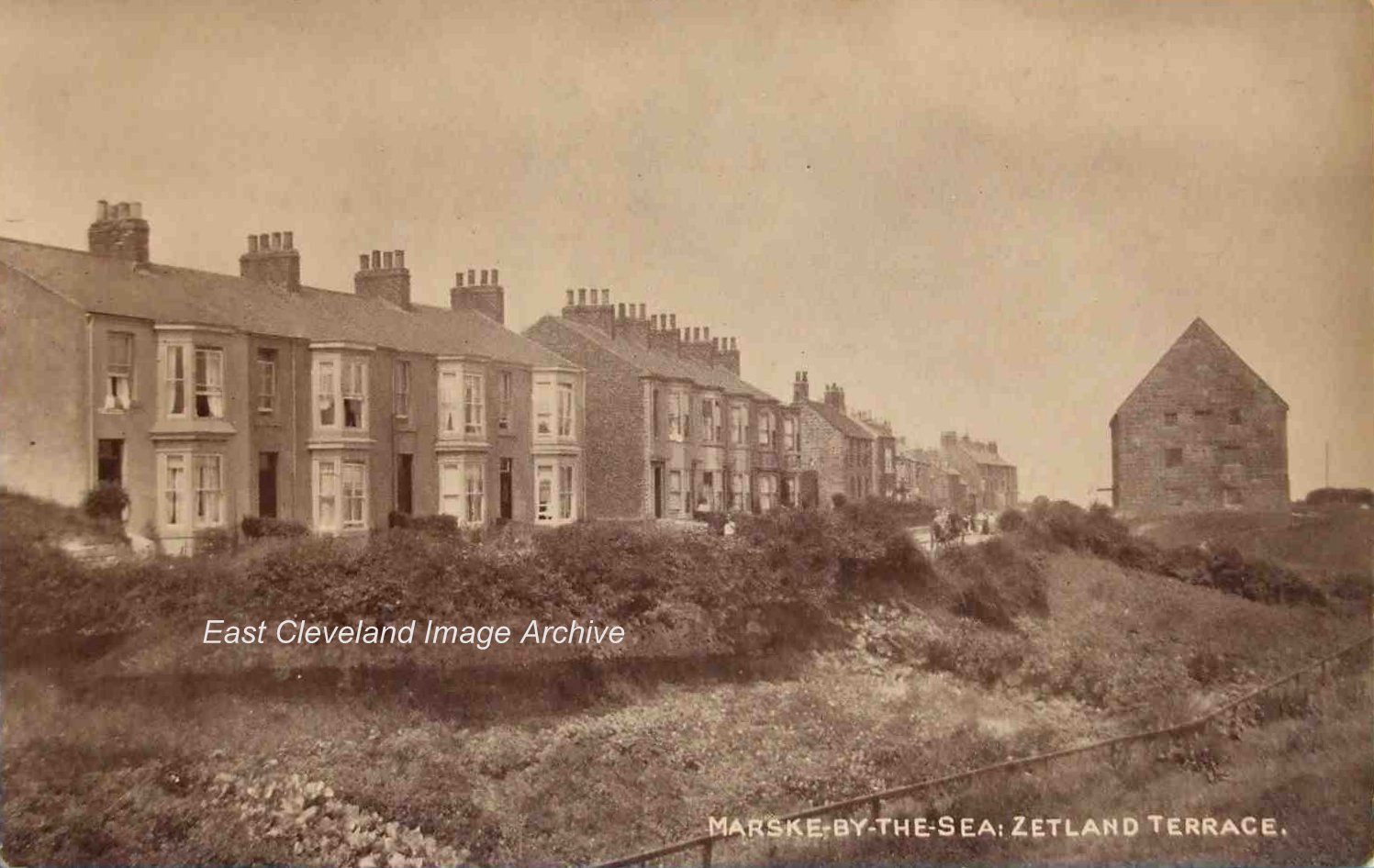
This postcard view of Zetland Terrace at Marske, includes an end-on view of the Tithe Barn. It dates from 1905 and was produced by W. Pounder of Redcar Road, Marske; another local postcard photographer and printer.
Image courtesy of John G. Hannah.
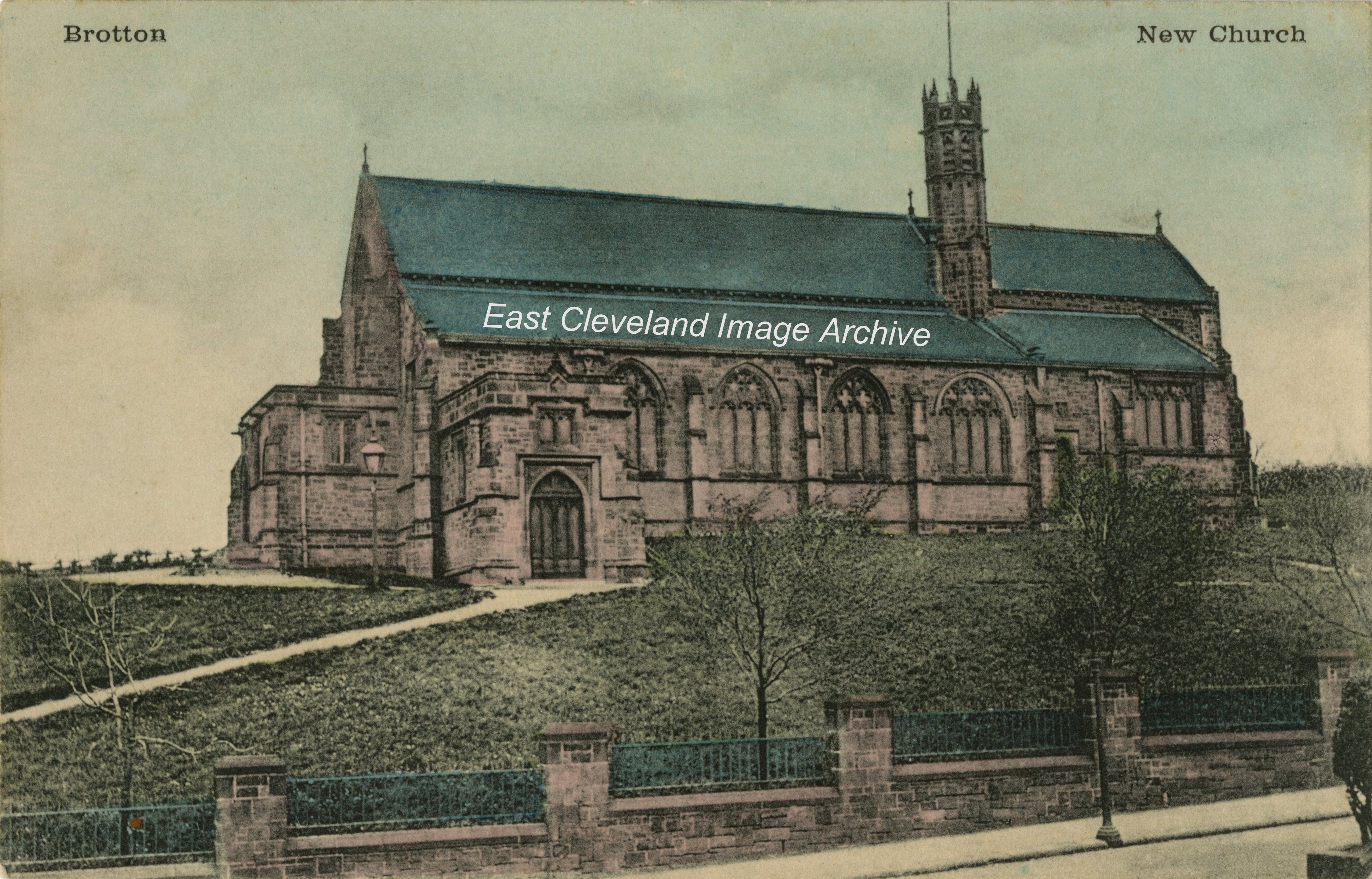
From a ‘Phoenix’ series postcard entitled “Brotton – New Church”; British History On-line states: “The new church dedicated to St Margaret was built lower down the hill-side in 1888–91. It was the gift of Miss Jackson of Hunley Hall and consists of chancel with south aisle, north organ chamber and vestry, nave of five bays, north and south aisles, and south and west porches. There is a small bell-turret on the south side between the chancel and nave. The roofs are covered with red tiles. The building, which stands well above the road and is of stone, is a very good example of modern Gothic work in the style of the 15th century.” The small trees behind the roadside wall were removed some years ago as they were deemed to be unsafe; but replaced with oaks which are now starting to grow well.
Image courtesy of Olive Bennett.
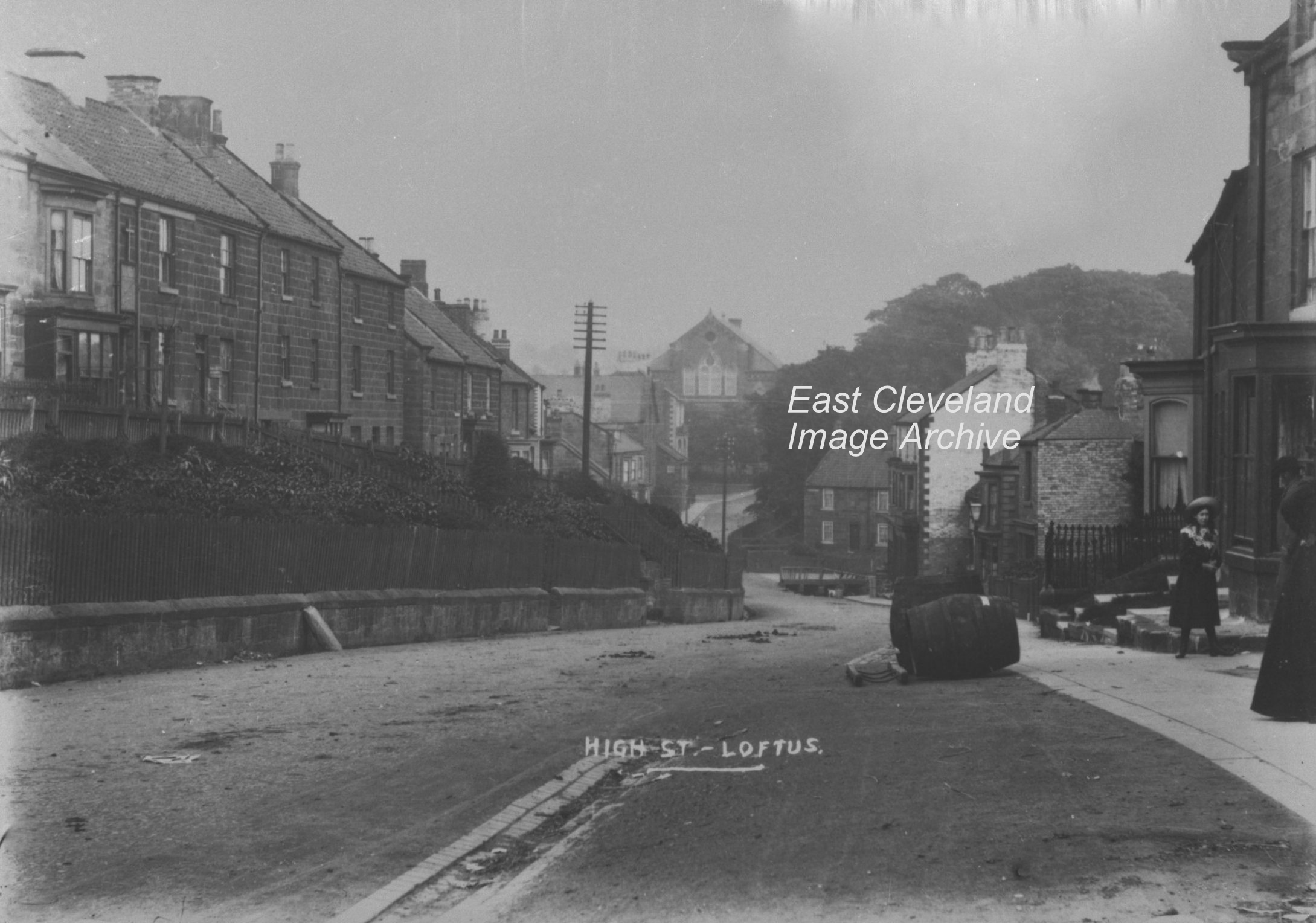
This view of HIgh Side and the High Street, dates from after 1910, but is pre the war memorial which was erected in 1922. Note the horse-drawn transport ’cards’ left on the road, perhaps the roses did not need any more to ensure a good show? Norman Patton tells us: ”The Newton Memorial Chapel stands magnificent in the background.”
Image courtesy of Mrs Sakelaropoulos and many thanks to Norman for that update.
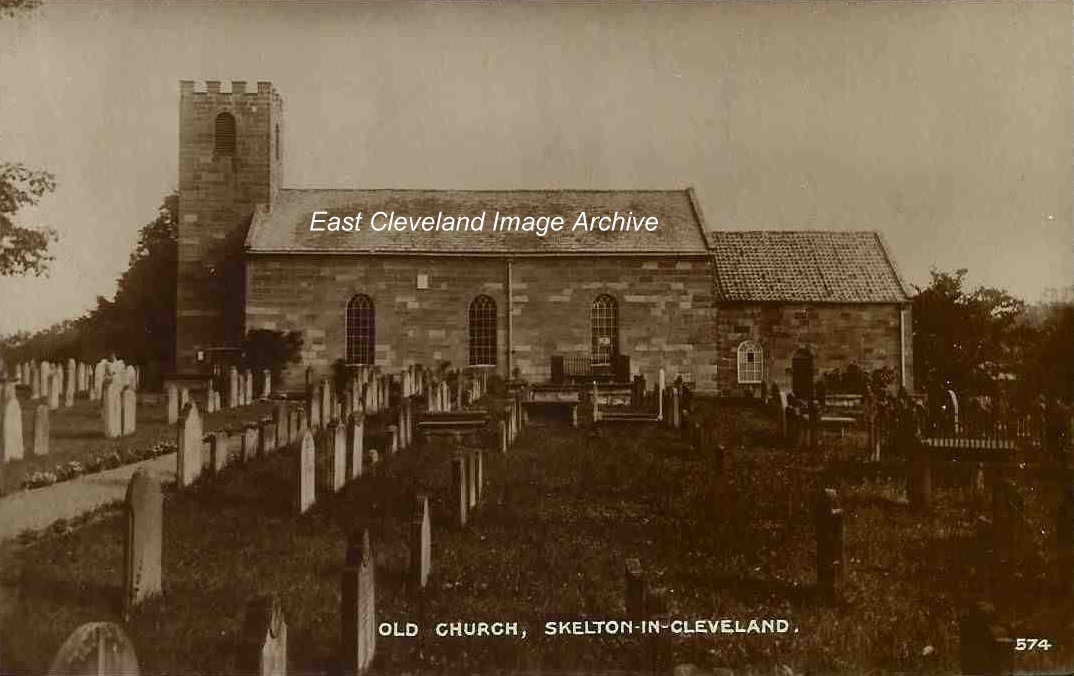
A postcard view; dating from 1915 of the old church of All Saints Skelton. Peter Appleton has assisted with: “The original church was probably erected by one of the Fauconbergs, who inherited the Castle upon the death of Peter de Brus III without issue. His eldest sister, Agnes, married Walter de Fauconberg and thus the estate passed into the hands of that family, until their male line died out in 1407. The name on the Faculty for the pulling down and rebuilding the church is Joseph William Hall Stevenson, who inherited the estate from his father, John Hall Stevenson, in 1785. The rebuild cost £443.2s.7d according to the Church Wardens’ Accounts Book and took place during 1785 and 1786. The cost was covered by a donation of £100 from Joseph, the sale to the parishioners of the pews in the nave, east gallery (no longer extant) and west gallery, plus the sale to the local plumber of the lead recovered off the roof. Several other prominent citizens also signed the Faculty.” The interior retains many old fittings, including a three-decker pulpit. Part of an old 11th century stone sundial found in the church yard is now in the new church.
Image courtesy of John G. Hannah and additional information courtesy of Peter Appleton.
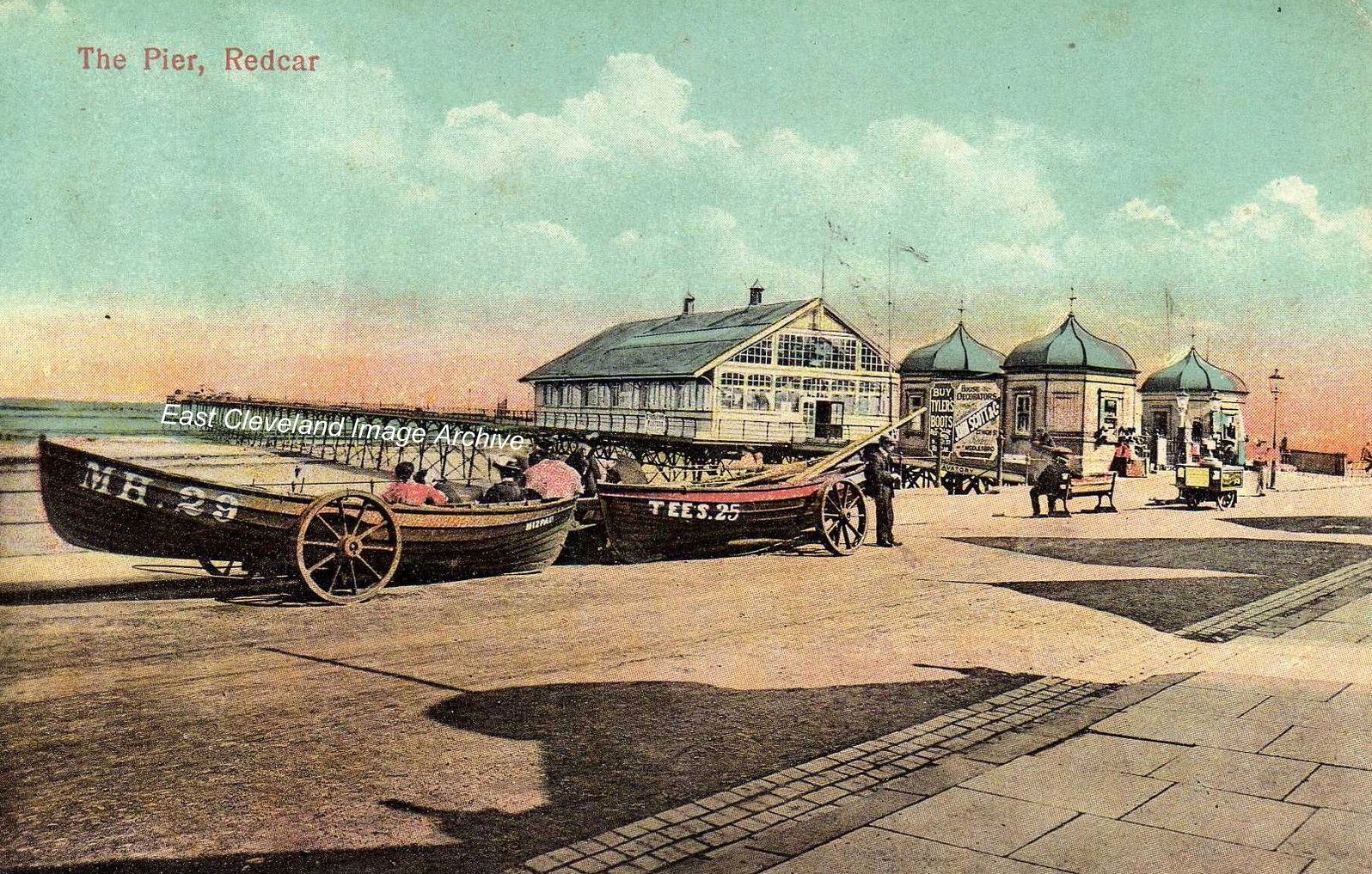
Redcar pier, c.1900, from a postcard view along Redcar promenade; ‘John Scott – House Decorators’; whose sign is on the entrance booth of the pier is listed in Bulmer’s Directory of 1890 and also had a branch in Middlesbrough. How nice to see the boats pulled up on to the promenade, in the sunshine.
Image courtesy of John G. Hannah.
|
|




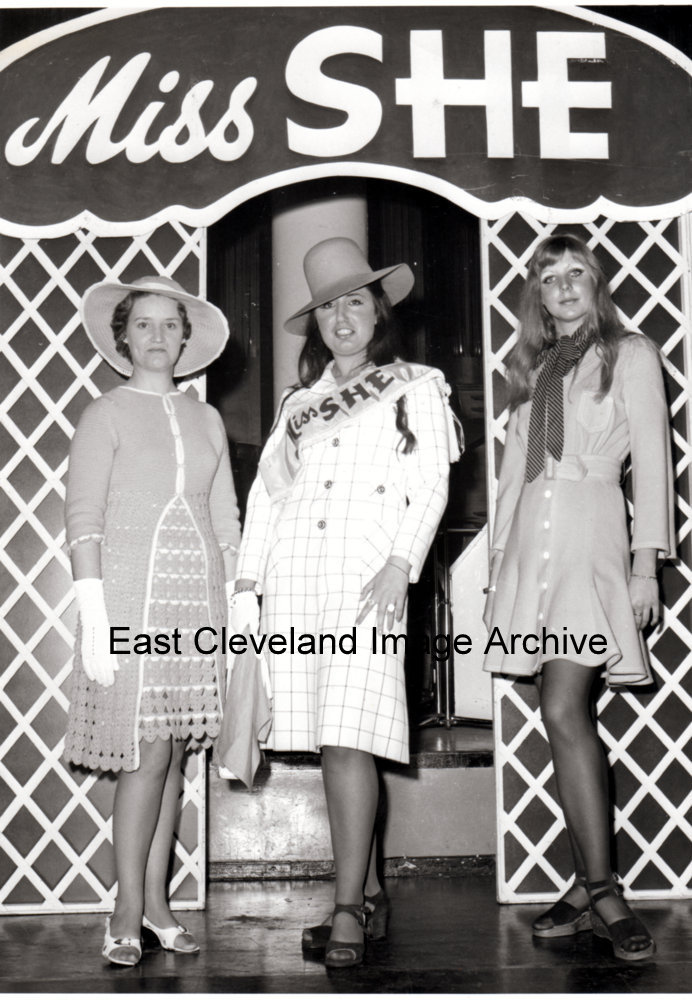





Recent Comments